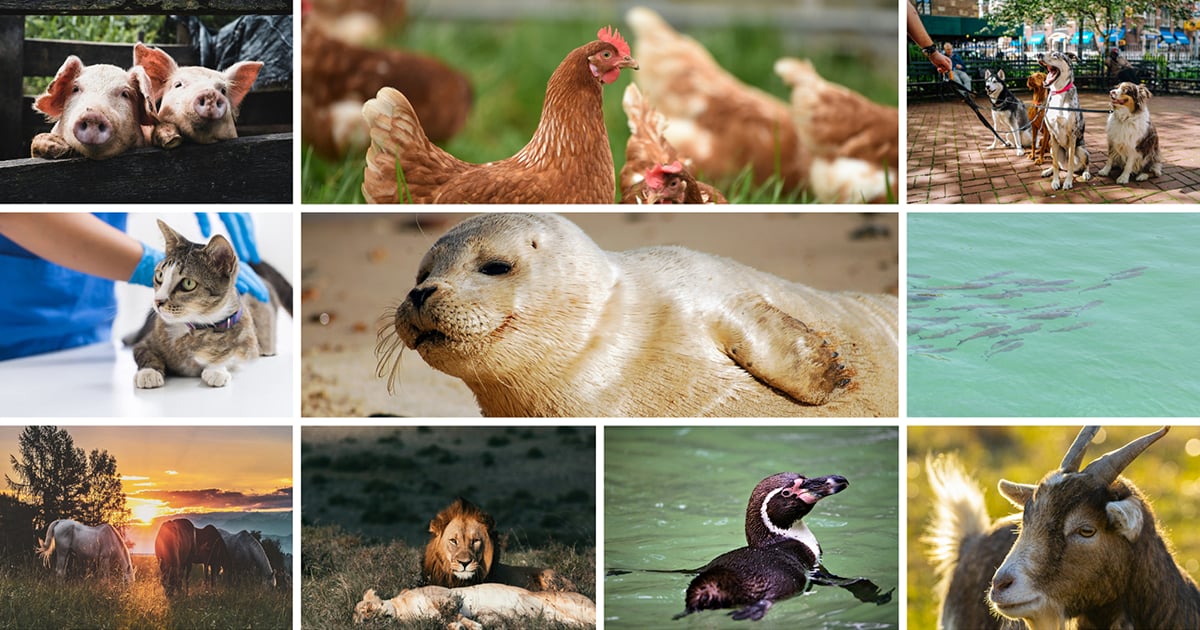- 2.7Impact Factor
- 5.2CiteScore
- 18 daysTime to First Decision
Animals’ Tenth Anniversary
Special Issue Information
Dear Colleagues,
To commemorate ten years of publishing Animals, papers are sought that describe the progress of scientific disciplines within animal science over the last ten years. It is expected that this will include, but not be restricted to, advances published in Animals. All the major sectors covered by Animals are suitable for this Special Issue, but to avoid duplication, it is recommended that you contact me (c.phillips@outlook.com) before drafting the paper to check that no one else is covering the topic. Particular emphasis should be placed on what has been achieved through these publications, changes in legislation, attitudes, development of standards, etc.
Prof. Dr. Clive J. C. Phillips
Guest Editor
Manuscript Submission Information
Manuscripts should be submitted online at www.mdpi.com by registering and logging in to this website. Once you are registered, click here to go to the submission form. Manuscripts can be submitted until the deadline. All submissions that pass pre-check are peer-reviewed. Accepted papers will be published continuously in the journal (as soon as accepted) and will be listed together on the special issue website. Research articles, review articles as well as short communications are invited. For planned papers, a title and short abstract (about 250 words) can be sent to the Editorial Office for assessment.
Submitted manuscripts should not have been published previously, nor be under consideration for publication elsewhere (except conference proceedings papers). All manuscripts are thoroughly refereed through a single-blind peer-review process. A guide for authors and other relevant information for submission of manuscripts is available on the Instructions for Authors page. Animals is an international peer-reviewed open access semimonthly journal published by MDPI.
Please visit the Instructions for Authors page before submitting a manuscript. The Article Processing Charge (APC) for publication in this open access journal is 2400 CHF (Swiss Francs). Submitted papers should be well formatted and use good English. Authors may use MDPI's English editing service prior to publication or during author revisions.
Keywords
- cattle
- small ruminants
- pigs
- poultry
- equids
- companion animals
- zoo animals
- wildlife
- aquatic animals
- animal welfare
- animal ethics
- animal nutrition
- animal physiology
- animal genetics and genomics
- animal system and management
- animal reproduction
- ecology and conservation
- public policy, politics and law
- birds
- human–animal interactions, animal behaviour and emotion
- veterinary clinical studies

Benefits of Publishing in a Special Issue
- Ease of navigation: Grouping papers by topic helps scholars navigate broad scope journals more efficiently.
- Greater discoverability: Special Issues support the reach and impact of scientific research. Articles in Special Issues are more discoverable and cited more frequently.
- Expansion of research network: Special Issues facilitate connections among authors, fostering scientific collaborations.
- External promotion: Articles in Special Issues are often promoted through the journal's social media, increasing their visibility.
- e-Book format: Special Issues with more than 10 articles can be published as dedicated e-books, ensuring wide and rapid dissemination.

